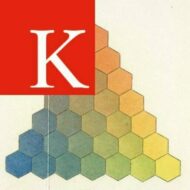Panelists and abstracts
Mila Oiva is a cultural historian enthusiastic about transnational patterns of circulation of knowledge, understandings, and disinformation in different temporal and technological settings. Full bio.
Exploring Soviet Newsreel Images with Computer Vision
Newsreels – the short news films shown in the 20th century in cinemas before the main feature – were dominant audiovisual depictions of contemporary world before the introduction of television. In the Soviet Union, newsreel production was launched early on, and it continued until the 1990s with state sponsorship and steering. One of the main aims of the newsreels was to convey Soviet audience views to the world that were in line with the Communist Party leadership’s goals. What did the word look like in the Soviet newsreels?
This presentation gives an overview of the ongoing newsreel collaboration at the Cultural Data Analytics lab CUDAN at Tallinn University, where we, among other things, explore visual representations of the world in a newsreel series produced in Moscow in 1944-1993. Using the Collection Space Navigator (https://collection-space-navigator.github.io/) tool produced in our lab we explore different data projections of newsreel frames to study the visual characteristics of Soviet newsreels and their temporal changes.
Nanne van Noord is Assistant Professor at the Multimedia Analytics lab of the University of Amsterdam. His research lies at the intersection of Computer Vision and Visual Culture. Full bio.
An Analytics of Film Culture
Increasingly we use AI to analyse films with the aim of understanding, at the same time we train these AI models on existing films – and the culture encoded therein. As such, a variety of factors influence what AI models learn and how film is conceptualised. In this talk I want to touch on some of these factors and discuss how we may try to disentangle these to obtain a theoretically grounded understanding of film.
Daniel Chávez Heras works across disciplines, his research combines critical frameworks in the history and theories of cinema, television, and photography, with advanced technical practice in creative and scientific computing. Full bio.
Creanalytics: between computational analysis and creative generation
In this presentation I describe a type of computational practice that aims to couple the relational-analytic powers of machine learning with the explanatory-creative powers of visual narrative. I provisionally call this approach creanalytics. To enact this coupling, I show a work-in-progress system designed to measure to what extent contemporary Hollywood films have been “seen by machine”.

Comments are closed.